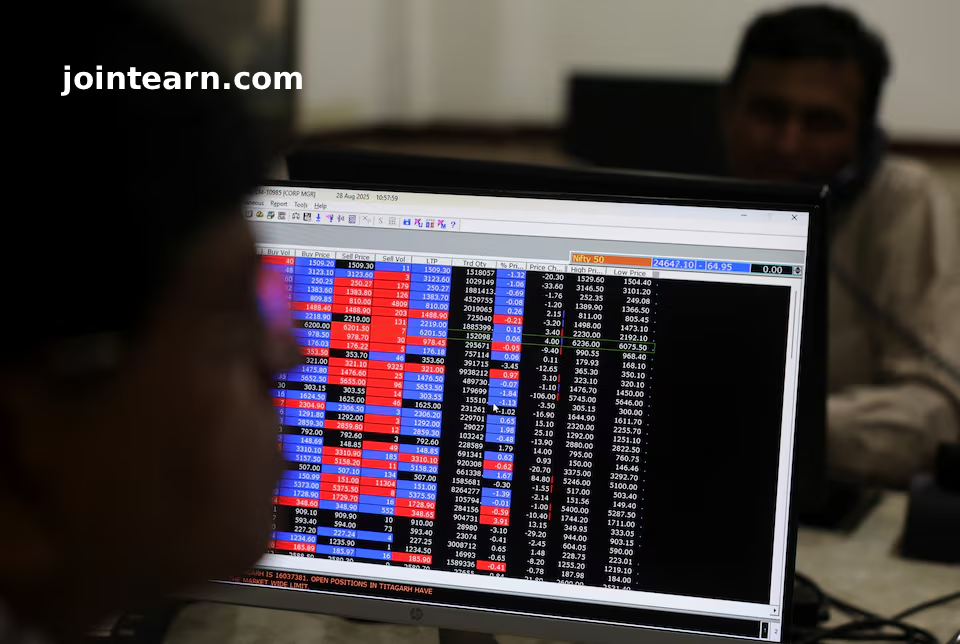
Foreign investment in Indian equities is expected to recover in the near term, according to Amundi, Europe’s largest asset manager. The rebound comes after significant outflows in 2025 caused India’s stock markets to underperform other major emerging markets.
Heavy Foreign Outflows in 2025
So far this year, foreign investors have sold $16.4 billion worth of Indian shares, marking the second-largest annual outflow on record. Despite this, domestic institutional investors have stepped in, purchasing approximately $77 billion, cushioning the market from a sharper decline.
The large foreign outflows were influenced by several factors:
- Soft nominal growth, with India’s GDP growth in high single digits despite strong real GDP performance.
- Moderate corporate earnings amid ongoing economic adjustments.
- High U.S. tariffs affecting certain Indian exports.
- Elevated stock valuations, prompting caution among global investors.
These conditions have left Indian equities trailing broader emerging-market benchmarks for the first time in five years.
Nifty 50 Performance Lags Regional Peers
India’s benchmark index, the Nifty 50 (.NSEI), has gained 10.8% in 2025, coming within 0.5% of its record high from the previous year. However, this performance has lagged behind:
- MSCI Asia-Pacific ex-Japan Index (.MIAPJ0000PUS) – up 24%
- Shanghai Composite Index (.SSEC) – up 16%
Despite underperforming regional peers, analysts at Amundi suggest that India is well-positioned for renewed foreign investor interest.
Conditions for a Foreign Investment Rebound
Alessia Berardi, Head of Emerging Macro Strategy at Amundi Investment Institute, said valuations are approaching a neutral zone and strong domestic demand is creating favorable conditions for a return of foreign flows.
“Real GDP was strong in April–June, but nominal growth was only in the high single digits, which is weak for India, where it’s typically above 10%,” Berardi noted.
“Growth should normalize in the coming quarters as corporate earnings improve.”
Amundi recommends increasing structural allocation to Indian equities, citing India as one of its top picks among emerging markets. The firm maintains a slightly positive outlook on Indian equities for the first half of 2026 while taking a neutral stance on China, Japan, and U.S. equities.
Indian Stocks as a Hedge Against Global Volatility
Berardi highlighted that Indian equities offer a useful hedge in a volatile global backdrop. The Indian economy’s heavy reliance on domestic consumption rather than exports provides resilience against global trade tensions and high U.S. tariffs.
“High U.S. tariffs are not really a concern,” she added, noting that India’s limited exposure to global trade conflicts and potential tariff reductions later this year support investor confidence.
Recent government measures aimed at boosting domestic consumption, including scheduled central pay revisions, further reinforce India’s growth outlook and attractiveness to foreign investors.
India’s Position in the Global Investment Landscape
Despite strong rallies in China, India is increasingly recognized as a diversifier and middle-power growth story with strong medium-term prospects. The country’s combination of robust domestic demand, stable policy support, and relative insulation from global shocks makes it an attractive destination for long-term equity investors.
Amundi manages $2.67 trillion in assets, and its insights underscore the growing importance of India as a core allocation in emerging-market portfolios.


Leave a Reply